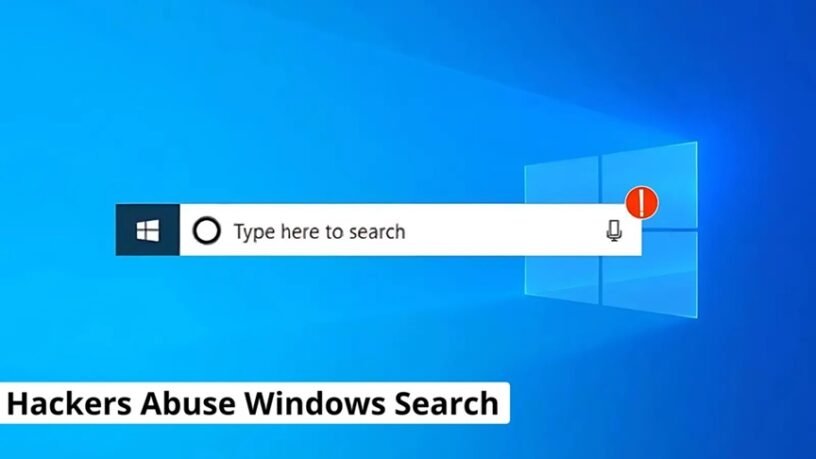Table of Contents
Introduction
Hey everyone, remember that time we learned about those sneaky hackers who were using everyday features like calculator apps to hide malware? Well, buckle up because they’re back at it, this time exploiting none other than… Windows Search!
That’s right, the search function you use to find documents on your computer can be misused to deliver malware. Let’s break down what this means and how to stay safe.
How Does This Windows Search Malware Attack Work?
Imagine this: you receive an email with an invoice attached (a common tactic). You open the seemingly harmless HTML file, and next thing you know, your Windows Search springs into action, launching a hidden web search. This search, however, isn’t looking for documents on your PC – it’s reaching out to a malicious server controlled by the attacker!
Here’s the kicker: the attackers can disguise this malicious search with a familiar name, like “Downloads,” making it appear completely normal. This social engineering trick makes it easy to miss the red flags.
Real-Life Example: How This Malware Spreads
In June 2022, security researchers discovered attackers using this technique in the wild. The attack involved malicious HTML files disguised as invoices sent via email. Once opened, these files would trigger a Windows Search query that redirected the user to a server containing malware.
This is a clever tactic because many antivirus programs might not scan inside zipped archives, allowing the malicious HTML file to slip through the cracks.

How to Stay Safe from Windows Search Malware Attacks
Even though this exploit sounds scary, there are ways to protect yourself:
- Be Wary of Unexpected Attachments: This goes for any email, even if it seems to come from someone you know. If you weren’t expecting an invoice or any other document, don’t open the attachment!
- Enable Email Attachment Blocking: Many email providers offer the option to block attachments altogether. Consider enabling this as an extra layer of security.
- Keep Your Software Updated: This includes your operating system (Windows in this case), antivirus software, and web browser. Updates often include security patches that can help protect against these kinds of attacks.
- Think Before You Click: If you open an attachment and see an unexpected Windows Search query, don’t interact with it! Close the window immediately.
- Consider a Security Solution: Security software with real-time scanning can help detect and block malicious websites that this Windows Search exploit might try to reach.
By following these tips, you can significantly reduce your risk of falling victim to this type of malware attack.
Remember, staying informed and cautious is your best defense!
Want to learn more? Here are some helpful resources:
- Trustwave SpiderLabs Blog: Search & Spoof: Abuse of Windows Search to Redirect to Malware
- Bleeping Computer: Phishing emails abuse Windows search protocol to push malicious scripts
By sharing this article, you can help your friends and family stay safe too!




Leave a Reply